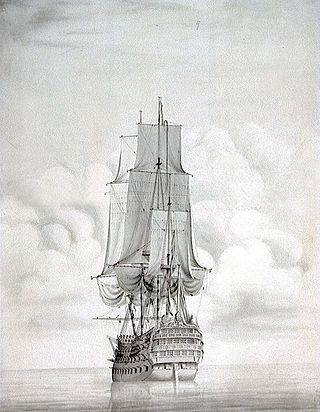
HMS Vanguard was a 90-gun second-rate ship of the line of the Royal Navy, built at Portsmouth Dockyard and launched in 1678.
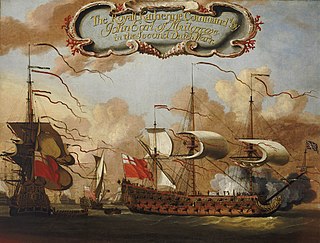
HMS Royal Katherine was an 84-gun full-rigged second-rate ship of the line of the Royal Navy, launched in 1664 at Woolwich Dockyard. Her launching was conducted by Charles II and attended by Samuel Pepys. Royal Katherine fought in both the Second and Third Anglo-Dutch Wars and afterwards, the War of the Grand Alliance before entering the dockyard at Portsmouth for rebuilding in 1702. In this rebuilding, she was upgraded to carry more guns, 90 in total, and served in the War of the Spanish Succession during which she was renamed Ramillies in honour of John Churchill's victory at the Battle of Ramillies. She was rebuilt again in 1742–3 before serving as the flagship of the ill-fated Admiral John Byng in the Seven Years' War. Ramillies was wrecked at Bolt Tail near Hope Cove on 15 February 1760.

HMS Cornwall was a 74-gun third-rate ship of the line of the Royal Navy, launched on 19 May 1761 at Deptford.

HMS Royal Oak was a 74-gun third-rate ship of the line of the Royal Navy, built by Jonas Shish at Deptford and launched in 1674. She was one of only three Royal Navy ships to be equipped with the Rupertinoe naval gun. Life aboard her when cruising in the Mediterranean Sea in 1679 is described in the diary of Henry Teonge.
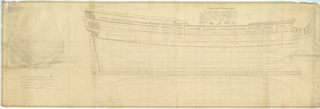
HMS Northumberland was a 70-gun third rate ship of the line of the Royal Navy, built at Plymouth Dockyard to the draught specified by the 1745 Establishment, and launched on 1 December 1750.

HMS Northumberland was a 70-gun third-rate ship of the line of the Royal Navy, built at Deptford Dockyard and launched in 1705.

HMS Venerable was a 74-gun third-rate ship of the line of the Royal Navy, launched on 19 April 1784 at Blackwall Yard.

HMS Pembroke was a 74-gun third rate ship of the line of the Royal Navy, launched on 27 June 1812 at Blackwall Yard.

HMS Cornwallis was a 74-gun third rate ship of the line of the Royal Navy, launched on 12 May 1813 at Bombay. She was built of teak. The capture of Java by USS Constitution delayed the completion of Cornwallis as Java had been bringing her copper sheathing from England.

HMS Falkland was a 50-gun fourth-rate ship of the line of the Royal Navy, built by Holland of New Castle, New Hampshire, and purchased by the navy in 1696.

HMS St Michael was a 90-gun second rate ship of the line of the Royal Navy, built by John Tippetts of Portsmouth Dockyard and launched in 1669.

HMS Oxford was a 54-gun fourth-rate ship of the line of the Royal Navy, built by Francis Baylie in Bristol and launched in June 1674. Her guns comprised twenty-two 24-pounders on the lower deck, with twenty-two large sakers (8-pounders) on the upper deck and ten smaller sakers (5-pounders) on the quarterdeck.
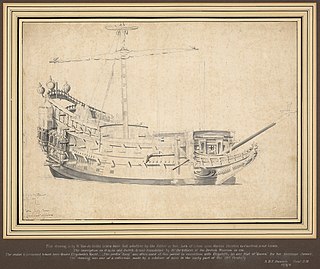
Golden Lion was a ship of the English Tudor navy, launched in 1557. She was rebuilt for the first time in 1582.
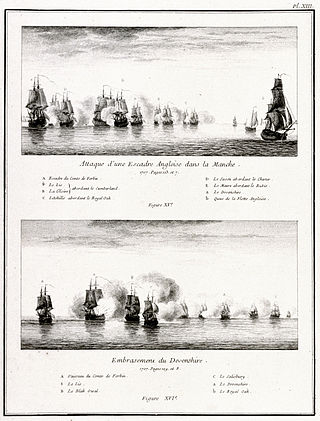
HMS Salisbury was a 50-gun fourth rate ship of the line of the Royal Navy, one of eight such ships authorised by the Navy Board on 24 December 1695 to be newly built ; the others were the Hampshire, Dartmouth, Winchester, Worcester, Jersey, Carlisle and Tilbury. The contract for the Winchester was signed with shipbuilders Richard and James Herring in 1696, for the ship to be built in their yard at Baileys Hard on the Beaulieu River in Hampshire, England, and she was launched there on 18 April 1698.
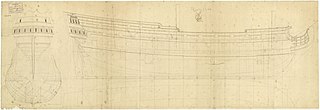
HMS Kingston was a 60-gun fourth-rate ship of the line of the Royal Navy, built by Frame in Hull and launched on 13 March 1697. She had an eventful career, taking part in numerous engagements.

HMS Lancaster was an 80-gun third rate ship of the line of the Royal Navy, launched at Bursledon on 3 April 1694.

HMS Lichfield was a 50-gun fourth-rate ship of the line of the Royal Navy, one of five such ships authorised on 16 November 1693 (three to be built in different Royal Dockyards and two to be built by commercial contract. The Lichfield was built by Master Shipwright William Stigant at Portsmouth Dockyard and launched on 4 February 1695. She was first commissioned in that year under Captain Lord Archibald Hamilton, for service in Home Waters.

HMS Grafton was a 70-gun third rate ship of the line of the Royal Navy. She was built by Swallow and Fowler, of Limehouse, London, to the dimensions of the 1706 Establishment, and was launched on 9 August 1709.
HMS Falmouth was a 50-gun fourth-rate ship of the line built for the Royal Navy in the first decade of the 18th century. The ship participated in several battles during the War of the Spanish Succession (1701–15) and the War of Jenkins' Ear (1739–48).

HMS Gloucester was a 50-gun fourth-rate ship of the line built at Deptford by Joseph Allin the elder for the Royal Navy in 1710/11. She participated in the War of the Spanish Succession. The ship was burned to prevent capture after she was damaged in a storm during Commodore George Anson's voyage around the world in 1742.


















